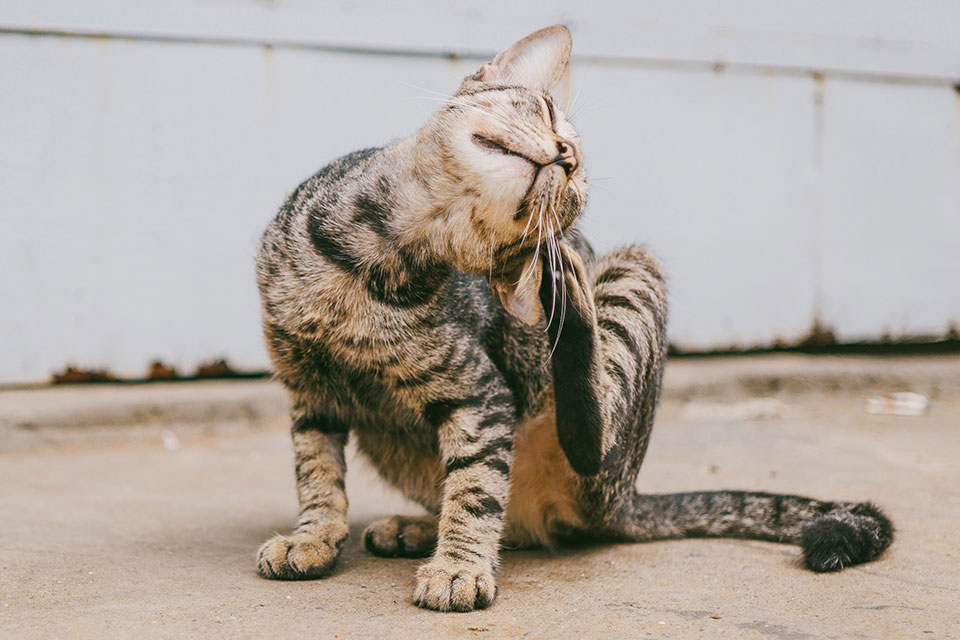
Air travel can be unpleasant enough for humans who know what is happening and what to expect. Unfortunately, flying can be a miserable experience for animals, especially because of the changes in pressure and resulting ears popping. When animals’ ears pop on airplanes it’s an uncomfortable and unfamiliar feeling that can cause anxiety in your pet, in addition to the stress of traveling. To avoid an awful experience, it’s important to understand the causes of ear-popping in animals, how to prevent it, and what to do if your animal does suffer from ear trouble on airplanes.
Though most animals can hear better than humans, their ear structure is quite similar to ours. Altitude changes affect the middle ear and the Eustachian tube that leads down to the throat. When there is an increase or decrease in air pressure, the pressure inside the middle ear must adjust to the change. This causes the ears to feel full or stuffed, making them uncomfortable and more difficult to hear.
With the pressure changes, the Eustachian tube eventually widens to stabilize the pressure within the middle ear. This widening, or “pop” feeling, can relieve ear discomfort until another change in pressure takes place. However, even though ear-popping eventually alleviates pressure in the middle ear, it can be an uncomfortable sensation as it happens — particularly for animals.
Humans can prevent painful ear popping during an airplane ascent and descent by chewing gum, yawning, swallowing, or sucking on a piece of candy. These actions cause the muscles of the Eustachian tube to contract and adjust the pressure for the middle ear.
Animals may not instinctively understand what to do to make their ears pop and equalize the pressure. This can result in anxiety and even panic. Animals depend on their sense of hearing to collect information about their surroundings. Airplanes are inherently noisy and, combined with pressure changes, your pet’s hearing might be temporarily compromised for reasons they don’t understand.
Unfortunately, there are no certain means of preventing an animal’s ears from popping. Even though, when animals’ ears pop on airplanes it’s ultimately the best outcome for their ears to adjust. However, if your pet struggles with their ears when on an airplane, it’s important to find ways to keep them calm or distracted.
Here are some techniques to help your pet cope with ear discomfort on an airplane and potential heightened anxiety:

The clinical name for “airplane ear” is ear barotrauma — this is the feeling of painful ear clogging due to a rapid change in air pressure. Most of the time, the symptoms of airplane ear resolve themselves once the air travel is completed. However, your pet may be at risk of developing a more serious case of ear barotrauma with longer-lasting effects.
It’s difficult to know whether an animal’s ears have popped or not. If their Eustachian tubes do open — pop — then the pressure in the middle ear should stabilize. However, if the Eustachian tubes are prevented in some way from expanding, it may cause the middle ear to fill with fluid as a means of balancing the pressure with the outside air. In addition, closed Eustachian tubes don’t allow the ear canal to drain. This could create a serious case of ear barotrauma that can lead to extreme ear pain, ruptured eardrums, infections, and even hearing loss.
Traveling with pets can be stressful, especially on an airplane. In some instances, air travel with your animal is unavoidable. It’s advisable to consider other options for your pet if air travel is not absolutely necessary. Most experts recommend alternatives to air travel with animals, such as going by car or utilizing a reputable boarding service or pet sitter at home. This allows you to minimize the risk of your pet getting any symptoms or complications due to airplane ear.